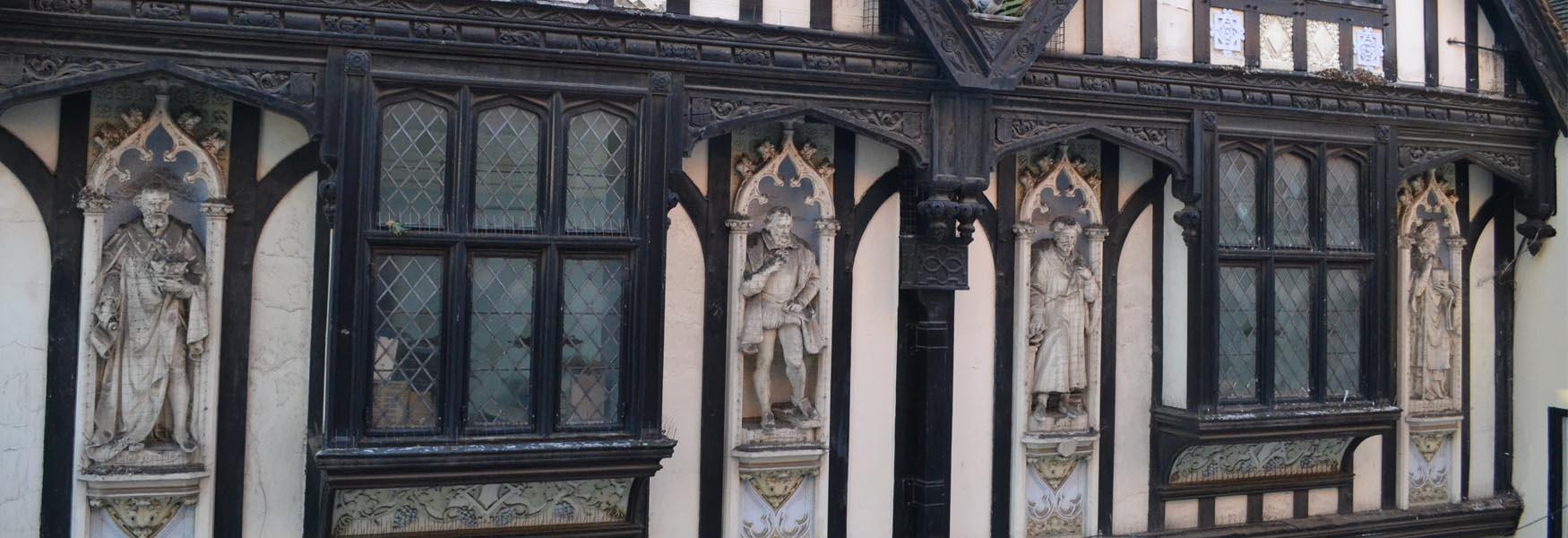To build your own Itinerary, click  to add an item to your Itinerary basket.
to add an item to your Itinerary basket.
Already saved an Itinerary?


You are here: Inspire > History of Maidstone > Stories from the Streets of Maidstone > Bank Street, Maidstone, Kent
Bank Street was formed by the encroachment of properties in Middle Row (first mentioned in 1446) into the former broad marketplace. It is probably the most complete historic street in Maidstone and most of the buildings in it are listed for their architectural or historic interest. Many are medieval timer framed structures, often re-fronted in the 18th or 19th Centuries but given away by their overhanging upper floors, a feature known as jettying. No.78 is a particularly important double jettied example with an elaborate early 17th Century lower façade featuring Iconic and Corinthian colonettes, as fine carved bay window and vigorous pargetting (applied plaster decoration) featuring the Royal Arms and the Prince of Wales’ feathers. This decorative treatment originally extended the full height of the building, but the upper floors were simplified to their present appearance in about 1820. Remains of mural paintings were found on the chimney breast on the first floor during renovations, but have been covered over again to preserve them.
Other notable features in the street include the flamboyant queen Anne style shopfront at No.73, the gilt crossed guns at No.85 (19th Century trade sign), the elaborate neo Tudor building at No.89/90 built in 1913 to the designs of Paul Waterhouse for the Prudential Assurance Company and featuring four statues of Kent worthies in medieval dress, and the Nation Westminster Bank of 1927 by F.C. Palmer and Walter Holden, which is an excellent example of “Bankers’ Georgian” with a fine domed interior, and occupies the site of the former headquarters of the Kentish Bank. It is now well worth a look and can be seen inside The Brenchley.
Bank Street was the former location of a distinctive industry, gin distillation. George Bishop was permitted by Parliament to distil gin in the 18th Century and by 1809 the Bank Street distillery was the town’s largest manufactory, producing 5000 gallons of week by the time of Bishop’s death in 1818, after which gin-making ceased. To find out more about this history visit The Maidstone Distillery in Market Buildings.
© Visit Maidstone 2025. All Rights Reserved



